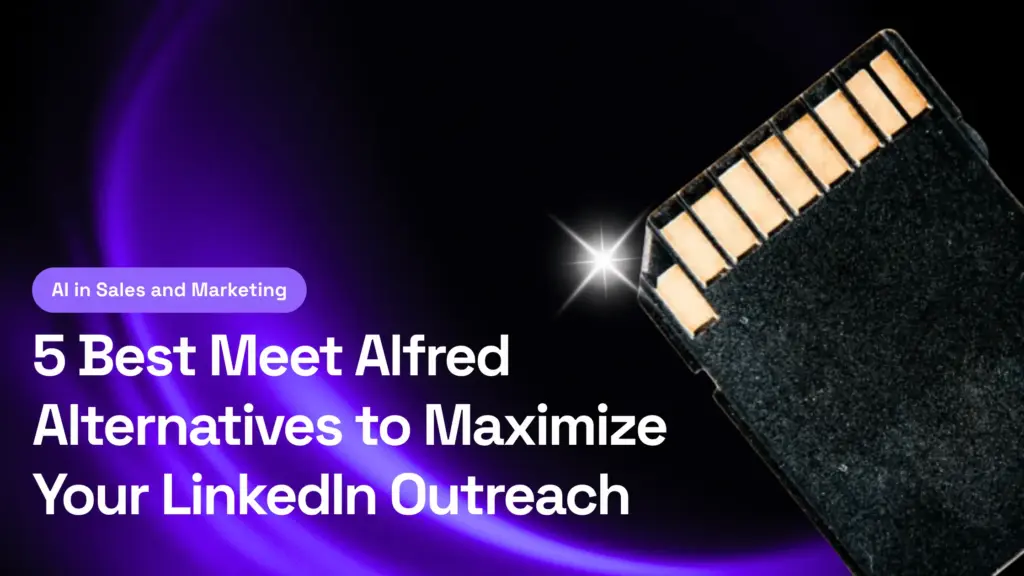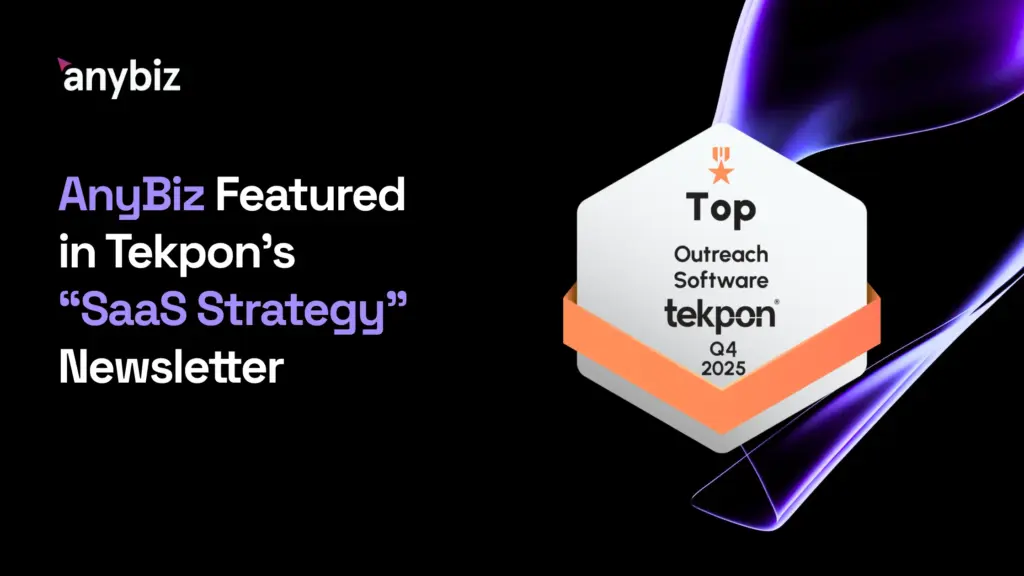Finding your social media target audience isn’t about reaching the most people; it’s about reaching the right people – those who are most likely to engage with your content, resonate with your message, and ultimately convert into loyal customers or ardent supporters.
But in a time where data runs like a great river, how can one negotiate these waters to discover their perfect audience? Here artificial intelligence (AI) shows up, turning audience targeting’s art into a science of hitherto unheard-of accuracy.
AI can sort mounds of data using machine learning techniques, spotting trends and insights that would take years for people to find. It can forecast actions, scale-personalize material, and learn and adjust constantly to fit the always shifting social media scene.
We shall explore closely the realm of social media target audiences in this article. We’ll go over what they are, why they matter, and most importantly – how you might use artificial intelligence to locate and interact with your perfect audience.
What is a Social Media Target Audience?
A target audience on social media is a specific group of people you aim to reach with your social media content and campaigns. These are the people most likely to be drawn to your offering of good service, or message. Commonalities abound among them, including psychographics (interests, values, lifestyles), demographics (age, gender, location, income level), and behaviors (purchase patterns, social media activity patterns).
Consider your social media target group as the virtual version of your perfect client approaching the door of your business. They are the most likely to stop, look, interact, and finally convert social media users – not just any ones.
Key Components of a Target Audience on Social Media:
- Demographics. Basic characteristics like age, gender, location, and income level.
- Psychographics. Deeper attributes such as interests, values, attitudes, and lifestyle choices.
- Behavior. How they interact with social media, their purchasing habits, and brand preferences.
- Pain Points. The problems or challenges they face that your product or service can solve.
- Platform Preferences. The social media platforms they use most frequently and how they use them.
Why Social Media Success depends critically on the identification of your target audience
By concentrating your efforts on a particular audience, you maximize the return on your time and money and produce something that really connects and increases interaction. Because your message reaches people who are actually interested, precise targeting also results in improved conversion rates.
Knowing your audience better than your rivals gives you a major advantage in a competitive market, which will help you to better manage your resources, modify your messages, and improve your products. In the end, a clearly defined audience improves not just your social media initiatives but also creates a devoted following of brand champions. Precision in social media is power; it’s about relating to the ones most important.
Trying to appeal to everyone in the huge and noisy realm of social media usually leads in appealing to none. Finding and knowing your social media target group can help you to concentrate your reach rather than limit it. Every post, every advertisement, every interaction you create is meant to draw in and involve the people most important to your company or cause.
Types of Social Media Target Audiences
1. Demographic-Based Audiences
Targeting via demographic means emphasizes particular traits such age, gender, income level, education, marital status, and employment. Customizing your messaging and material to appeal to the intended audience depends on an awareness of these basic demographics.
A brand aiming at millennials, for example, will probably stress different values, tones, and platforms than one aimed at pensioners. Through focused demographic data analysis, companies may make sure their material appeals to the population most likely to interact with their goods or services.
2. Interest-Based Audiences
Beyond the fundamentals, interest-based targeting reaches people depending on their hobbies, activities, and lifestyle choices. Social media channels let you target groups with common interests by gathering vast information on what consumers enjoy, follow, and interact with.
A fitness brand might, for instance, target consumers that interact with fitness influencers, follow health-related material, or belong to fitness-related organizations. This kind of targeting helps companies to engage with consumers who are naturally drawn to their products, therefore fostering more significant relationships.
3. Behavioral-Based Audiences
Behavioral targeting divides audiences according on their brand loyalty, online activity, and buying trends. This approach is very effective since it lets companies interact with consumers who have shown particular behavior, including regular online shopping, involvement with particular kinds of material, or past contacts with your brand.
Retargeting efforts could benefit from focusing on consumers who have lately seen your products but haven’t bought anything. Behavioral data offers a window into the consumer journey, allowing you to create messages that directly respond to where users are in the purchasing process.
4. Location-Based Audiences
Whether local, regional, or worldwide, location-based targeting lets you reach groups depending on their geographic position. Businesses with a physical presence – that is, retail stores, restaurants, or service providers – need this kind of targeting since it guarantees that those who might visit your location will view your content.
Geographic targeting can also help global businesses match messaging to various cultural and regional settings, therefore increasing the relevance and impact of your material in many markets. Furthermore perfect for advertising supporting regional products, seasonal specials, or local events are location-based audiences.
How to Define Your Social Media Target Audience
Step 1: Analyze Your Current Audience
Begin by closely examining your existing followers. Knowing who already interacts with your brand helps you to better understand the kinds of individuals drawn to your goods or services. Gather information about your present audience using technologies including Google Analytics, Facebook Insights, and Twitter Analytics. Sort of emphasis on:
- Demographics: Age, gender, location
- Behaviors: What content they engage with most
- Interests: What other pages or brands they follow
👉 Tip: Search for surprising revelations. A beauty firm might find, for instance, that a good number of its consumers are drawn to environmentally friendly goods. This could result in a successful turn towards sustainable beauty goods, just as L’Oréal grew its market share by stressing sustainability.
Step 2: Research Competitors
Analyzing your competitors’ audiences can provide additional insights. Look at the followers of brands similar to yours and examine their engagement patterns. Use tools like SEMrush or BuzzSumo to:
- Identify successful content. See which content performs well for your competitors and why.
- Spot engagement trends. Understand what resonates with their audience.
- Discover opportunities. Find gaps in your competitors’ strategies that you can capitalize on.
👉 Example: When Nike analyzed its competitors, it noticed a growing trend in athleisure. Nike effectively introduced their own line of athleisure apparel by following this trend, which started to be a major income source.
Step 3: Leverage Social Media Analytics
Each social media platform offers analytics tools that can provide detailed insights into your audience. For example:
- Facebook Insights provides information on the demography, activity levels, and interests of your followers.
- Twitter Analytics reveals trending topics and which tweets your audience most finds interesting.
- Instagram Insights provide the age, gender, and geography of your audience as well as post popularity.
👉 Tip: Use A/B testing to hone your material. Coca-Cola, for example, employs A/B testing on its social media channels to see which kind of material – text, photos, or video – best stimulates interaction. This strategy has kept their high degree of involvement across several groups.
Step 4: Create Audience Personas
With the data you’ve gathered, it’s time to create detailed audience personas. An audience persona is a semi-fictional character representing a segment of your target audience. To build these personas, combine:
- Demographic information. Age, gender, income level
- Interest data. Hobbies, favorite brands
- Behavioral insights. Online shopping habits, social media usage
👉 Example: Spotify notably customizes their playlists using audience personas. Understanding the listening patterns of its customers helps Spotify generate very customized playlists that fit particular moods, genres, and activities, therefore keeping users engaged and devoted to the platform.
Step 5: Refine and Adjust Your Strategy
Clearly defining your target audience calls for constant improvement rather than a one-time chore. Track audience participation and comments constantly as you apply your social media plan. This information will help you change your identities and focusing strategies. As an illustration:
If a particular type of content is resonating more, create more content in that style.
If a segment of your audience isn’t engaging as expected, reevaluate the persona or explore new ways to reach them.
👉 Tip: Keep a close watch on developing trends. For instance, Netflix continually improves its content strategy by examining viewer statistics. Understanding what viewers are watching helps Netflix create or acquire material that will keep members returning for more.
The secret is to keep adaptable and sensitive to the wants and behavior of your audience so that your marketing initiatives are both successful and quick. Like the most successful companies worldwide, you may develop a dynamic and exact approach to captivating your social media audience by following these guidelines and advice.
Creating Content for Your Target Audience on Social Media: Best Practices
Understanding Audience Preferences
Developing material that appeals to your social media target group starts with thorough knowledge of their preferences. This implies customizing your material to fit what your readers find fascinating, worthwhile, and entertaining. Knowing their likes, dislikes, and the topics they care about, you can create content that captures their attention and encourages interaction.
Optimizing Visual Identity
First impressions matter. Your profile visuals — especially your display image — are often the first thing users notice. Using a profile picture generator can help individuals and brands craft high-quality, personalized profile photos that reflect their identity and attract the right audience. This simple touch contributes to brand consistency and user trust across all platforms.
Content Formats
Once you have a grasp on your audience’s preferences, the next step is determining the best content formats to use. Different audiences respond better to different types of content, whether it’s videos, infographics, blogs, or social media posts. For example, you might need to create short, engaging videos or generate eye-catching images for platforms like Instagram or TikTok to attract younger audiences, while more professional audiences may prefer detailed articles or well-crafted posts on LinkedIn.
Consistency and Relevance
Maintaining consistency in both your brand voice and posting schedule is crucial for building a strong connection with your audience. A consistent brand voice helps to create a recognizable and trustworthy presence, while a regular posting schedule keeps your audience engaged and expecting your content.
Engagement Strategies
Finally, effective engagement strategies are essential for interacting with your audience in a meaningful way. This involves more than just posting content; it’s about actively participating in conversations, responding to comments, and fostering a community around your brand. By engaging directly with your audience, you can build stronger relationships and encourage more interaction with your content. Strategies like asking questions, hosting live sessions, or creating interactive posts can significantly boost engagement and help your audience feel more connected to your brand.
Related – Lead Generation through Content Marketing: Trends & AI
How to Do This with AI: How AnyBiz Can Help

Finding and involving your target audience shouldn’t stop on social media. A thorough approach combining several channels and techniques is absolutely necessary to really maximize your efforts at outreach and lead creation. AnyBiz is an innovative, AI-driven platform meant to automatically maximize the whole lead-generating process from beginning to end.
A Comprehensive Solution for Lead Generation
AnyBiz isn’t just another tool for social media targeting; it’s a full-scale, AI-powered solution that handles every aspect of lead generation. Imagine trying to sell your product without knowing when a company is ready to buy or even who to contact. AnyBiz eliminates this guesswork by using cutting-edge AI to identify potential business clients who are most likely to engage with your offerings.
The platform scans for signs that a company might need your product, analyzes vast amounts of data to develop detailed client profiles, and then automatically engages with them through tailored outreach. From sending personalized messages and scheduling meetings to warming up your email domain to avoid spam filters, AnyBiz manages it all. Essentially, it does the groundwork, so you can focus on what matters most – closing deals.
Here’s how AnyBiz can boost your social media lead generation:
AI Sales Agents
AnyBiz’s AI-driven sales agents are at the core of its social media strategy. These virtual agents craft unique, multi-channel outreach sequences for each prospect, including tailored messages on platforms like LinkedIn. They automate the entire engagement process, making smart decisions about the best timing and content to maximize interaction.
Personalization and Multi-Channel Engagement
AnyBiz ensures that every message is personalized and relevant. The platform doesn’t just limit itself to LinkedIn; it also engages potential clients through email, and even via AI-powered cold calls.
LinkedIn Brand Awareness
AnyBiz’s AI agents actively engage on LinkedIn, writing posts, liking, and commenting on relevant content to boost your brand’s visibility. This consistent interaction not only helps build brand recognition but also positions your company as a thought leader in your industry, attracting more attention from potential clients.
Automated Email Classification and Response
Social media interactions often lead to email communication. AnyBiz takes over from here by classifying and responding to emails automatically, ensuring that your engagement remains consistent and personalized even during high-volume campaigns.
Dashboard and Metrics
AnyBiz provides a comprehensive dashboard where you can track metrics like brand awareness, opportunities created, and social media engagement.
IP Recognition and Targeted Outreach
In addition to social media, AnyBiz identifies companies visiting your website and then uses this information to create targeted outreach campaigns. This feature complements your social media efforts by ensuring that you’re reaching out to businesses that have already shown interest in your brand, increasing the likelihood of conversion.
Finding and involving your target audience in the competitive market of today calls for more than just social media targeting. It calls for a thorough, multi-channel strategy using artificial intelligence to find, interact with, and turn on possible customers. AnyBiz provides precisely that – a complete, AI-driven platform that automates the whole lead generating process, therefore guaranteeing that your efforts are not only very effective but also rather efficient.
AnyBiz frees you to concentrate on closing deals and expanding your company while helping you connect with the correct people at the right moment – personalized social media interaction, automated email management, or multi-channel outreach. Start your 7-day free trial today and see how effortlessly you can find and engage your ideal clients!
Conclusion
Effective marketing depends on your social media target audience being identified and engaged. Deeply knowing your audience and using artificial intelligence can help you to reach unparalleled accuracy in your targeting activities. Along with simplifying this procedure, AI tools such as AnyBiz.io improve your capacity to interact with the appropriate people at the appropriate moment. Start using AnyBiz.io and other AI-driven tools to improve your social media involvement and get better outcomes.
📜 Related articles:
FAQ
What is a target audience in social media marketing?
A target audience is a group of people most likely to be interested in your products or services. In social media marketing, identifying your target audience is crucial because it allows you to tailor your content and messages to those who are most likely to engage with your brand.
How can I find my target audience on social media?
To find your target audience on social media, start by analyzing your current followers and their behaviors. Use social media analytics tools to gather data, and then create a buyer persona—a detailed profile of your ideal customer. This will help you focus your marketing strategy on the people most likely to convert.
Why is it important to identify your target audience in social media marketing?
Identifying your target audience is essential because it ensures that your marketing efforts are directed towards those who are most likely to be interested in your products or services. A well-defined target audience allows you to create more effective and efficient campaigns, ultimately improving your overall marketing strategy.
What role does a buyer persona play in finding your target audience?
A buyer persona is a fictional representation of your ideal customer, based on real data and insights. It helps you identify your target audience by outlining their demographics, interests, behaviors, and pain points. In social media marketing, using a buyer persona allows you to create content that resonates with your audience, leading to better engagement and conversion rates.
How can AI tools like AnyBiz help in social media marketing?
AI tools like AnyBiz can significantly enhance your social media marketing efforts by automating the process of finding and engaging your target audience. These tools analyze vast amounts of data to identify patterns and behaviors, helping you pinpoint the right audience. By integrating AI into your marketing strategy, you can ensure that your content reaches the most relevant audience, optimizing both engagement and ROI.
Can targeting a specific audience improve my marketing strategy?
Yes, targeting a specific audience can greatly improve your marketing strategy. When you identify your target audience, you can tailor your content, messaging, and ads to meet their specific needs and interests. This targeted approach not only increases engagement but also leads to higher conversion rates, making your marketing efforts more effective.
What are the first steps to identify your target audience for social media marketing?
The first steps to identify your target audience involve analyzing your existing customer base, researching your competitors, and creating a buyer persona. By understanding who your ideal customers are, you can better focus your social media marketing efforts and develop a strategy that resonates with them.




